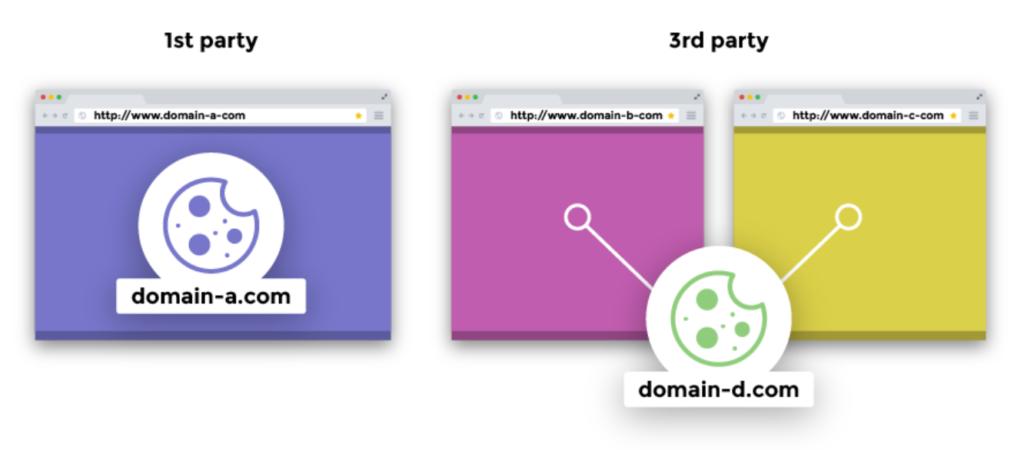3rd-Party Cookies are small text files that are placed on a user’s computer from a website that is not the one the user is visiting. The third party creates these cookies using domains and is typical uses for tracking and advertising purposes.
For example, a website may use a 3rd-Party Cookie to track a user’s browsing history. Also shows them targeted advertisements based on their interests.
The biggest challenge for advertisers and publishers in the coming year will be establishing user identity. From 2022, Google Chrome will completely ban cross-site tracking of actions via cookies.
3rd-Party Cookie, small files placed on a user’s computer by a third-party technology platform. When a user visits a website, have long been a primary identifier of a user on the Internet.
They helped advertisers set ad targeting and show users personalized content and ads.
It’s also in line with the entry into force of GDPR in Europe and the previous removal of third-party cookies in its Safari and Firefox browsers in 2017.
However, Google’s plan will affect the industry much more: the company has an absolute Monopoly on the browser market.
With the removal of third-party cookies, addressability via web channels will disappear. In addition to third-party cookies, other IDs and technical parameters may also have outdation.
IDFA and GAID
Apple announced the explicit opt-in mechanism for IDFA for iOS apps; Android explores similar steps for its identifier: GAID.
Consequences of ID phase-out The decline in the value of advertising IDs is undermining established digital advertising practices. Affects: Audience Targeting, Frequency Capping, Multi-channel attribution.
For advertisers, existing targeting and retention scenarios will disappear, not to mention optimization models for ROAS and LTV.

Most of the customer base remains unusable for the remarketing mechanics. They have not implemented data management functions. eCPM for inventory without data will be 2-3 times lower. And advertiser budgets can be allocated to walled gardens and platforms that collect user data.
The industry has one year to decide on a sustainable alternative to risk losing touch with its user base.
Let’s look at alternatives to third-party cookies that can help advertisers and publishers solve critical user targeting and fulfillment problems.
Cookie Alternatives
Adtech vendors have already released several alternatives to third-party cookies that will help publishers and advertisers identify users.
Birds from the privacy sandbox When Google announced its plan to disable third-party cookies, it offered an alternative called the privacy sandbox.
The proposed API is on a cohort analysis of browsing history, not individual user data, and its design is a more privacy-friendly solution.
Aside from Google’s FLoC initiative, other companies like Criteo have published their alternatives to cookies, including API proposals like SPARROW.
